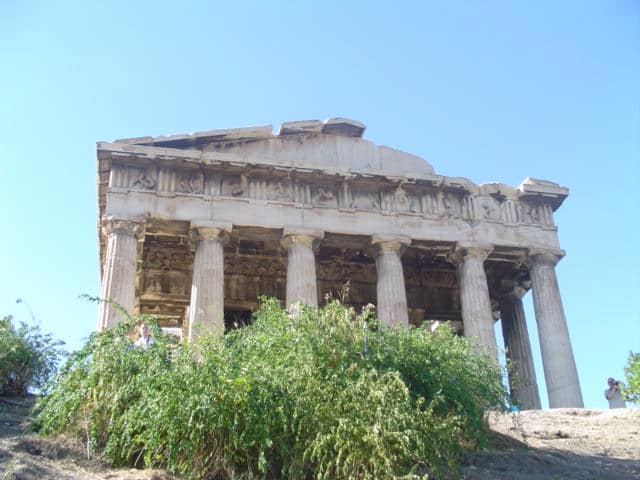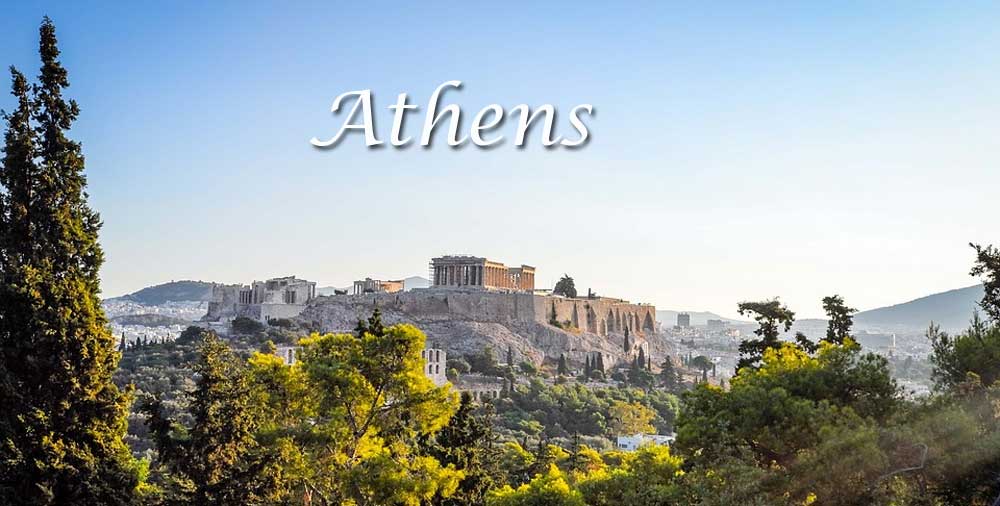The Hephaestus temple in Athens Greece ( Thiseio )
The temple of Hephaestous located at the top of the hill of Agoraios Kolonos, which delimits the Ancient Agora of Athens on the west side, more commonly known as “Thiseion”. It is one of the best preserved ancient temples, which is due in part to its conversion into a Christian church. According Pausanias, The Greek God Hephaestus, protector of the metallurgists, and Athena Ergani, protector of the potters and the housework, were worshiped together in the temple.
The identification of the temple as “Hephaestus” was confirmed by the excavation research with the discovery of metallurgical workshops in the wider area of the hill, thus overshadowing older views, which recognized the mythological hero of Athens Theseus, Hercules or Mars as worshiped deities. The construction of the temple must have taken place between the years 460-420 BC. by an unknown architect, to whom, however, other temples in Attica are attributed, with similar construction.
The temple had a pronaos and a backdoor. Externally it was surrounded by a Doric colonnade, with 6 columns on the narrow sides and 13 on the long ones. The whole building, from the platform to the roof, was made of Pentelic marble, while the architectural sculptures that adorned it were made of Parian marble.
Inside the nave there was a two-column colonnade and at the bottom there was a pedestal, on which stood the bronze cult statues of Hephaestus and Athena, works of the sculptor Alkamenis, according to Pausanias, which must have been made between the years 421 -415 BC The temple had a rich sculptural decoration. Of particular interest from the architectural sculptures are the metopes, which adorned the eastern side of the occasion on the outside and represent the labors of Hercules

Following these, on the north and south sides, are depicted four feats of Theseus, scenes from which the popular name “Thisseion” for the temple originated. The frieze does not run through the four sides of the nave, but only the pronaos and the posterior. The pronaos depicts Theseus’ victorious struggle against the claimants to the throne, the 50 sons of Pallanta, in which six gods of Olympus are also present.
In the rear wall, in the width of the nave, the Centaur Battle is depicted. Remarkable sculptural representations also adorned the gables of the temple. To the west was represented the Centaur Battle and to the east the reception of Hercules on Olympus or the birth of Athena.
Some of these sculptures are identified in statues found in the area of the temple, such as the fragmentary surviving complex of two female figures, one of whom carries the other on her shoulder, as if trying to save her and the torso of a dressed female figure with a strong element of movement, which could be one of the capes of the temple. towards to the Ancient Agora on the frieze are scuptures of the fall of Troy while in another eastern frieze depicts a battle scene.
